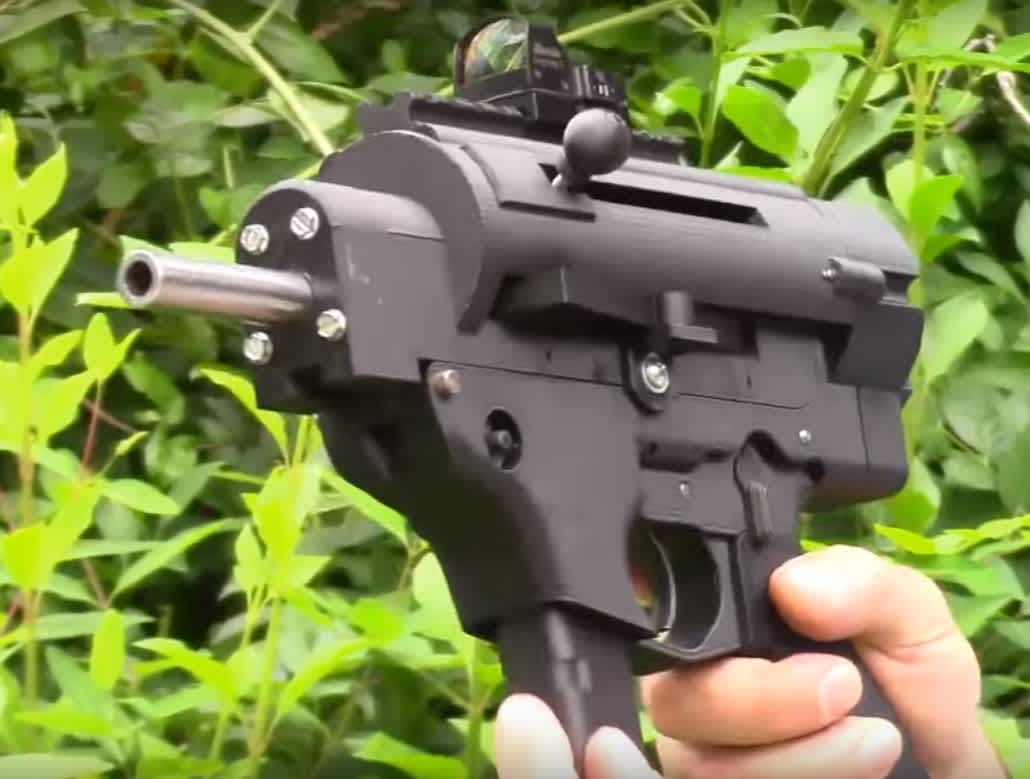The Reality of 3D Firearms Printing
OutdoorHub Staff 08.25.16

One thing can be said about the firearms community as a whole: there is plenty of fascination with new possibilities. Whether it is the hot gun du jour, or another promising new trend, our curiosity is often piqued and many of us want a piece of the pie.
3D printed guns are no exception.
As the possibility of a 3D printed gun hit the internet a few years ago, it was met with immediate attention. It was almost as if an electrically charged hush fell over the pro-gun crowd while they bit their lips in anticipation. Could we really create firearms in the comfort of our own homes without a drill press and metal trades experience?
Truth be told, the concept of 3D printing is not a new one; it has been around for several decades now. What has changed is access to the tools necessary to utilize it. Computers have become more prevalent in homes, and the cost of 3D printers has come down. Now that it is possible to equip yourself with the tools of the trade, the only question remaining is: What you will choose to do with them? For some, the answer is to print guns.
Created in 2013 and drawing the most attention from the media – and the government – is the 3D printed Liberator, courtesy of Defense Distributed. What we have here is a gun made mostly of plastic with a nail to serve as a centerfire firing pin. It also has a slug affixed with epoxy to make it compliant with the Undetectable Firearms Act of 1988, which requires 3.7 ounces of metal so firearms appear on detective devices. While the end result is a functional firearm, the barrel can withstand the force of firing off only a single shot, but the design allows for easily replaceable barrels.
In a world where we expect firearms to perform, it is ultimately an inconvenience to have to change barrels between shots, especially in a self-defense situation.
Because the barrel is an integral part of every firearm, an easy solution to the Liberator’s single shot issue is to work a legitimate barrel into your plans. Enter a more durable example such as the Shuty-MP1 (photo above) made by Derwoodvw earlier this year. It is a mostly 3D printed creation using an aftermarket 9mm Glock barrel along with a few internal components. This gun is capable of 18 shots before the plastic faces the possibility of overheating.
Taking this gun and learning from it, Derwoodvw went on to make improvements to his design, such as adding Warfairy-designed Gluty lower to its successor seen in the video below. The end result is a largely 3D printed gun that may not be the prettiest thing to look at, but has handled thousands of rounds without a jam.
Even the best-made 3D printed plastic gun is likely to have a failure point prior to its trusty metal counterparts. However, that shouldn’t get you down because it is also possible to 3D print a gun made of metal. This was first achieved by Solid Concepts (now Stratasys Direct Manufacturing) using a direct metal laser sintering system. The end result is a fully functional 1911 created by sintering a metal powder together. As layers are made and fused together, a firearm is born, in this case a stainless-steel centerfire handgun that fires .45 ACP and is capable of vigorous performance.
3D Printing Obstacles
What about price? For starters, although 3D printing has become more affordable, acquiring a 3D printer of your own can set you back a few grand. To get around this, it may be possible to buy used or even lease one, but you can expect to spend some time getting acquainted with it, and we all know time is money. You also must factor in supplies to perform the actual printing, as well as for safety during a test-fire session. Most of all, you’ll need patience to endure any possible learning curves you encounter during the download, print process, and assembly.
Next, you have to remember that sometimes when things seem to be too good to be true, they sometimes are. Legislation has already been introduced to stand in the way of 3D printing with the bills such H.R.1474 and S.1149 on federal level, and state laws such as SB-808 in California. Although these did not come to pass, the push remains to regulate the homemade gun business, and California’s AB 857 was recently signed into law. This requires application for unique serial number or identifying mark prior to manufacture, and a completed background check from the state Department of Justice prior to issuance.
On the bright side, however, the ATF is still on our side, keeping gun owning rights intact as long as there is no law prohibiting the person from owning the firearm, and it is National Firearms Act compliant (not a machine gun, SBR, SBS, etc.). Current federal law does not inhibit technology or processes involved in the creation of most personal firearms, but manufacture for sale or distribution are another matter.
As advances are continually made in the manufacture of firearms, we can be certain that 3D printing will be a large part of this landscape. However, the same holds true for the institution of legislation designed to inhibit the ability of the everyman to take advantage of this flexible technology in the creation of firearms.

